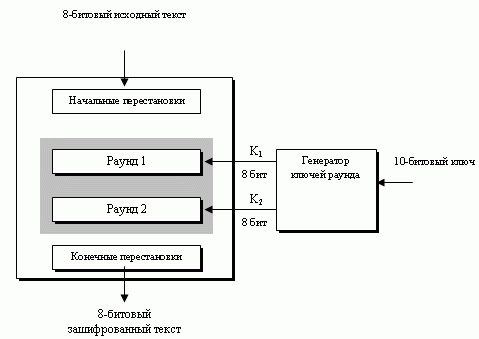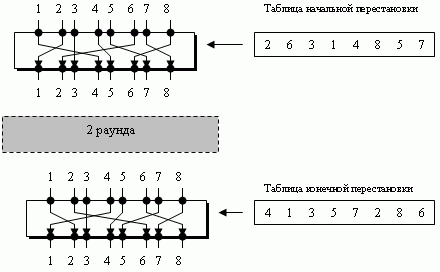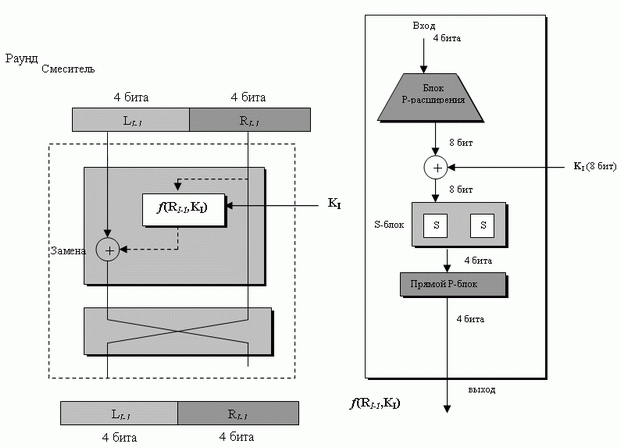Answer the question
In order to leave comments, you need to log in
How to encrypt with the S-DES algorithm?
Stuck on the last two paragraphs of the task (7 and 8)
1. Take the first 10 letters of your “Last Name First Name Patronymic”.
2. Convert them into a 10-bit key according to the following scheme: each consonant
letter is replaced by “1”, and the vowel is replaced by “0” (vowels include: a, i, y,
u, and, s, o, e, e, e; to consonants all the rest).
3. According to the known algorithm, calculate two subkeys.
4. Take the first five letters of your "Last Name First Name Patronymic".
5. According to the given ASCII code table (See Windows ASCII character code table
(Win-1251).pdf, replace each letter with the corresponding code (
case sensitive).
6. Convert each code to binary 8-bit representation.
7. Run S-DES algorithm for each 8-bit block.
8. The received five 8-bit encrypted blocks are converted into a decimal
format, which will serve as an answer.
1) Mahlaniki
2) 1011011010
3) Key1: 11110101
Key2: 01100011
4) Makhla
5) CC E0 F5 EB E0
6) 11001100
11100000
11110101
11101011
11100000
Further in the theory it is written about the encryption algorithm itself, the initial transformations
1100100100 -> 11010010 -> 11010010 -> 11010010 -> 11010010 -> 11010010 11100000 -> 11010010 11100000 -> 11010010
11100000 -> 11010010 11100000 > 10110000 (2 identical letters "a", do it once)
11110101 -> 11111100
11101011 -> 10110111
Then some more transformations are made using Key1 and Key2. And then the final transformations. I still don't understand how to do it, please help. Some kind of understandable algorithm, or a ready-made solution.
The eighth point, I think, and I can handle it myself, the seventh is not clear.
Here's what's in permutations. The initial and final permutations are clear, it is not clear what is happening with the rounds.


Here are the rounds themselves, apparently I missed something in them and I can’t figure it out

Answer the question
In order to leave comments, you need to log in
Didn't find what you were looking for?
Ask your questionAsk a Question
731 491 924 answers to any question